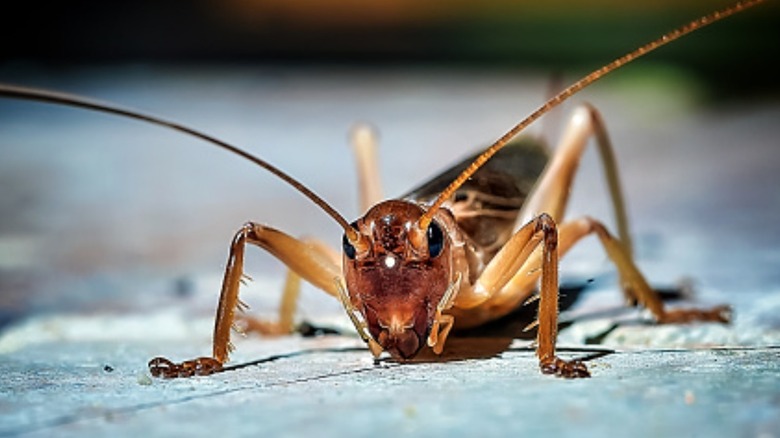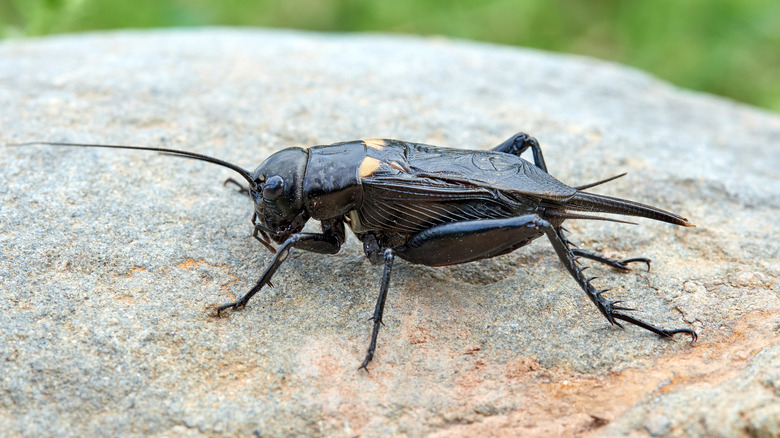How Crickets Can Be Used To Predict The Temperature
Before the days of weather tracking satellites and apps on smartphones, people learned to predict the weather in unique ways. Weather predictions ranged from methods still used today, such as watching the clouds, to old wives tales about cats cleaning their ears before rain (via Little House Living). One such weather indicator that has been used to predict the temperature outside has been to count the number of chirps that a cricket makes in a given period of time, which works with surprising accuracy.
According to the Library of Congress, the frequency of a cricket chirp will vary depending on the temperature. In order to approximate the temperature, all you have to do is count the number of chirps a cricket makes in the span of 15 seconds and then add the number 37. This will result in a rough estimate of the temperature outside in Fahrenheit. According to Almanac, this works because crickets chirp faster during warmer weather. This method is apparently so accurate that the National Oceanic and Atmospheric Administration features a cricket chirp converter to make estimating the temperature even easier.
Crickets chirp faster in warm weather due to their cold-blooded nature
The reason that crickets can be used to estimate the temperature is due to the fact that they are cold-blooded. According to Vocabulary.com, cold-blooded animals are not able to regulate their own body temperature and thus need to be more aware of the surrounding temperature, as they cannot tolerate extreme temperature as well as warm-blooded animals can. The chemical reactions that power bodily functions in all animals slow down if it gets too cold, making cold-blooded animals, who are unable to keep themselves warm, especially slow during cold weather (via the American Chemist Society).
Since crickets are cold-blooded, their activity levels are directly related to the temperature. Colder temperatures prevent crickets and other cold-blooded animals from being as active. This causes the number of chirps a cricket makes to decrease with cold weather and increase with warm weather (via Almanac). Warmer temperatures make it easier for crickets to chirp, so the frequency with which they chirp naturally increases when the weather warms up.
Some cold-blooded animals become completely inactive during winter
Since crickets and other cold-blooded animals are unable to keep themselves warm, they tend to not live in colder climates. If they find themselves in cold enough weather, they may even become completely inactive. Both turtles and frogs bury themselves in mud during the winter to hibernate because the cold weather prevents them from being active (via the American Chemist Society).
Because of their cold-blooded nature, crickets will not chirp at low temperatures. Generally speaking, you won't hear any cricket chirps below temperatures of 55 degrees Fahrenheit or above 100 degrees Fahrenheit, according to the University of Nebraska's Department of Entomology. Crickets not only become inactive at low temperatures, but they also may be overheated in hot weather. This puts limits on using crickets for determining extreme temperatures, but if you're experiencing this type of extreme weather you probably won't need an insect to tell you that.


